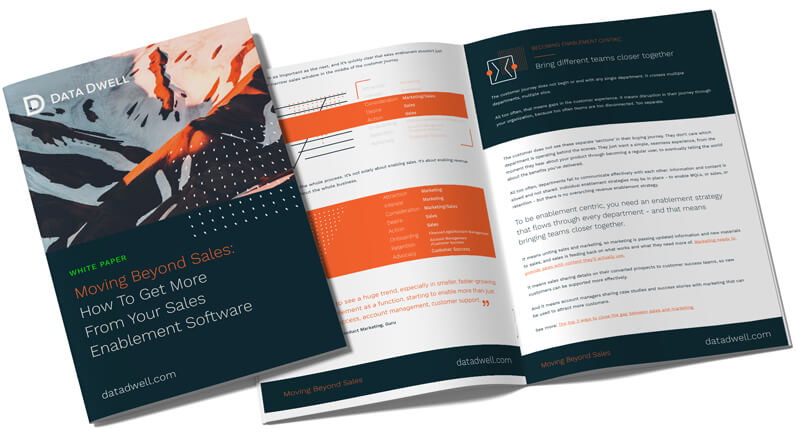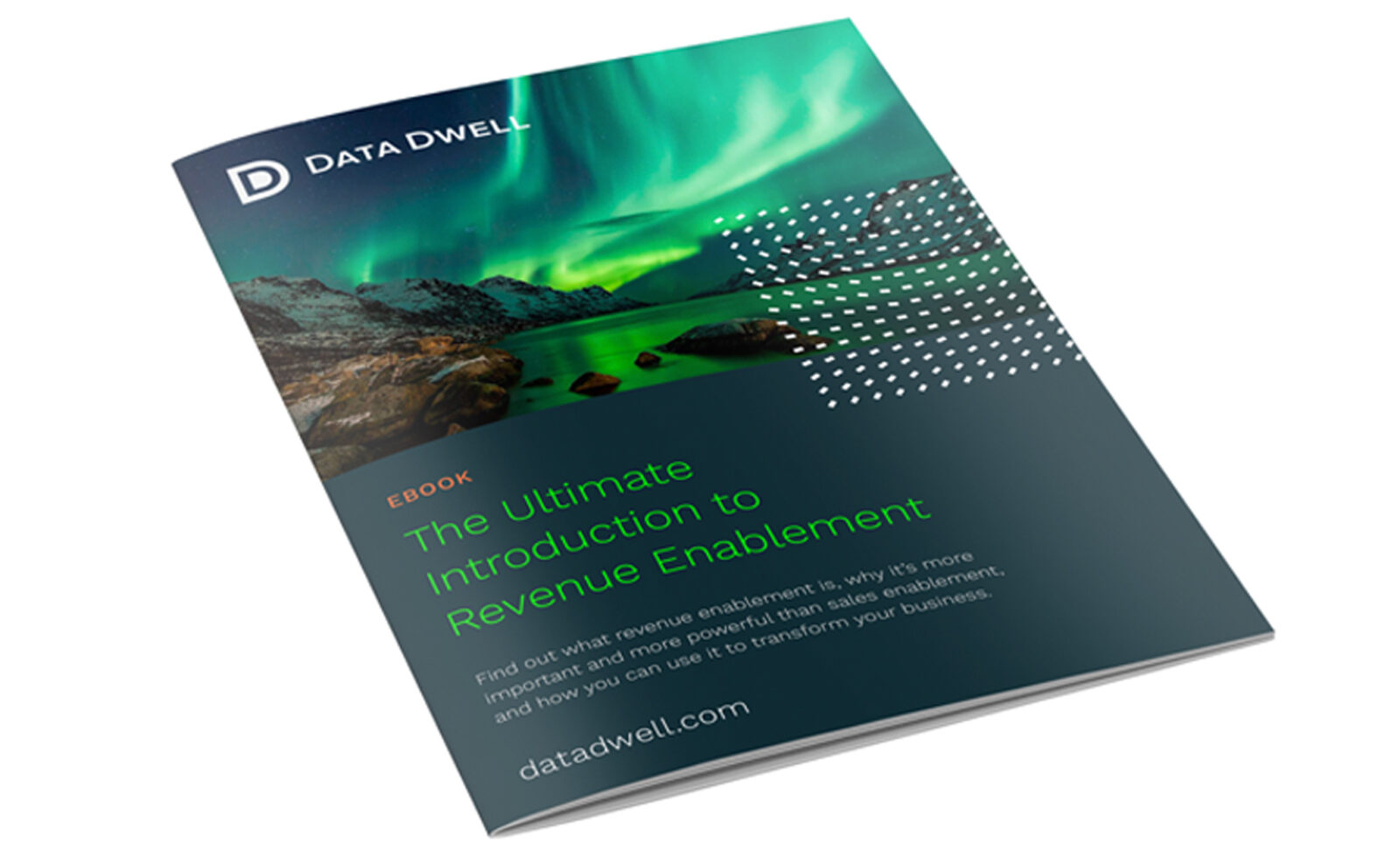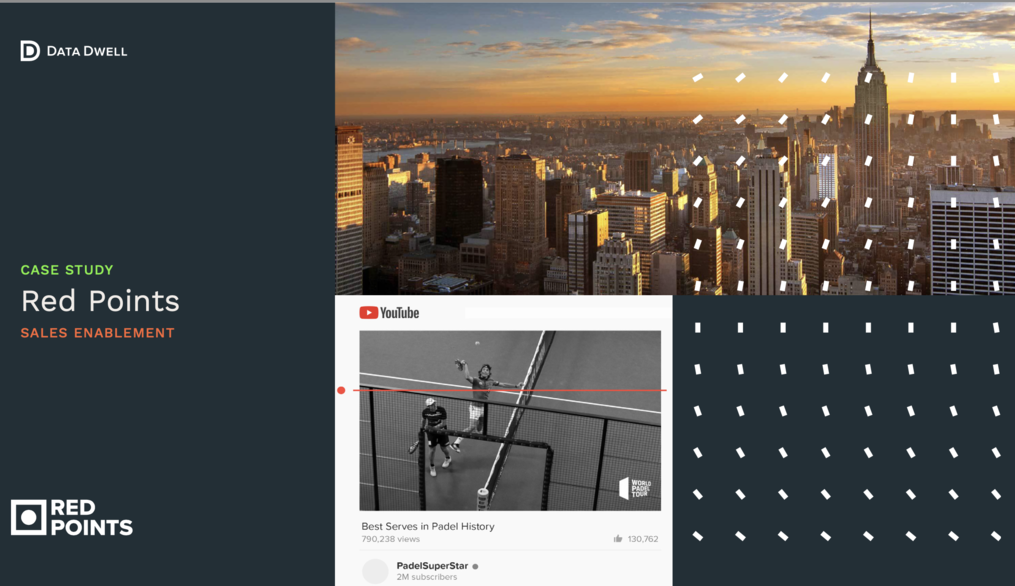
At first glance, you’d be forgiven for thinking that sales enablement and revenue enablement are the same thing – but there are big differences between the two. Big differences in outcome and big differences in application.
They might seem like two ways of looking at the same process, like two sides of the same coin, but that’s not the case. The difference between sales enablement and revenue enablement isn’t the choice of words. The difference is in the entire approach.
1. Revenue enablement has a greater focus and a wider remit
Let’s start with the most obvious difference. As its name suggests, sales enablement has a strict, narrow focus that’s easy to understand. It’s focused on enabling more sales. Its remit is to help sales reps convert more prospects into customers. To close more deals.
But those closed deals are just one type of revenue for your organization. Sales enablement typically stops there; the deal is closed, the prospect converted, the sale won.
Revenue enablement takes in a much wider remit, focusing on ALL types of revenue – sales, retention, referrals, renewals, upsells and cross-selling. It looks at all the ways a customer can contribute to business revenue, and aims to support each and every touchpoint.
2. Revenue enablement has a customer centric focus
Where sales enablement supports sellers, revenue enablement puts the customer at the heart of everything. Its purpose is to give customers (or those teams who engage with customers) the tools, training and content they need for a better experience with your organization.
Sales enablement’s purpose is typically to just help sales reps position content to sell more effectively. Revenue enablement is all about helping the customer, whether that’s through content they can access directly or by giving everyone in a customer-facing role the support they need to better engage that customer.
3. Revenue enablement supports the entire customer journey
That customer engagement may not lead directly to a sale, which is one of the key differences of revenue enablement compared with sales enablement. Sales enablement focuses specifically on the interactions required to move a prospect to a customer. To get the sale.
Revenue enablement looks to engage and interact with customers at every stage of their buying journey and beyond. It starts before a lead lands on marketing’s radar and it doesn’t end. It follows customers from their interest and consideration stages, through their purchasing decision and into the onboarding process. It supports customer success activities, helping ensure customers are active and happy, driving further engagement and further activity through referral programs, renewal incentives, upsell opportunities and much more.
Even lapsed customers or old prospects have a role to play in a revenue enablement approach.
4. Revenue enablement covers every department
Because revenue enablement supports the entire customer journey, a revenue enablement approach will naturally cover every department in your organization.
Sales enablement only focuses on your sales teams, though it may include marketing at times. Revenue enablement includes marketing and sales alongside every other department that has any kind of interaction with a customer.
That means finance, legal, account management and customer success teams will all benefit from a revenue enablement approach.
5. Revenue enablement moves well beyond sales metrics
Sales enablement and revenue enablement differ in the metrics they prioritize and the KPIs they focus on too. Where sales naturally focuses on those traditional sales metrics like deals closed, time to close and lead-to-sale ratio, revenue takes a more holistic view.
Revenue enablement metrics focus more on the customer, prioritizing figures like customer lifetime value, customer satisfaction numbers and retention rates. Sales metrics are an important part of revenue enablement, but they’re only one part.
It recognizes that bottom line revenue – the single most important metric – is influenced by a number of different factors, and makes sure those other metrics – referral rates, upsells and cross-sell – get just as much of a focus as traditional sales metrics.
6. Revenue enablement prioritizes customer experience over sales
Perhaps most importantly, the biggest difference between sales enablement and revenue enablement is in their goals, in the experience they aim to promote.
For sales enablement, the goal is to give prospects a better buying experience between being engaged by marketing and a sales rep closing the deal. Its priority is to get that sale, ideally as quickly and efficiently as possible.
For revenue enablement, the goal isn’t just about prospects, it’s about customers too. It’s about giving anyone who interacts with your organization – in any capacity – the best possible experience.
The best browsing experience, the best buying experience, the best onboarding experience, the best user experience. The best customer experience at every opportunity.
Ultimately, while sales enablement and revenue enablement are two different approaches, they are related. Sales enablement is simply one part, one narrow focus of a larger, revenue enablement approach.
Revenue enablement is about moving beyond sales and focusing on the entire customer experience. Maybe it’s time you thought about applying it?




